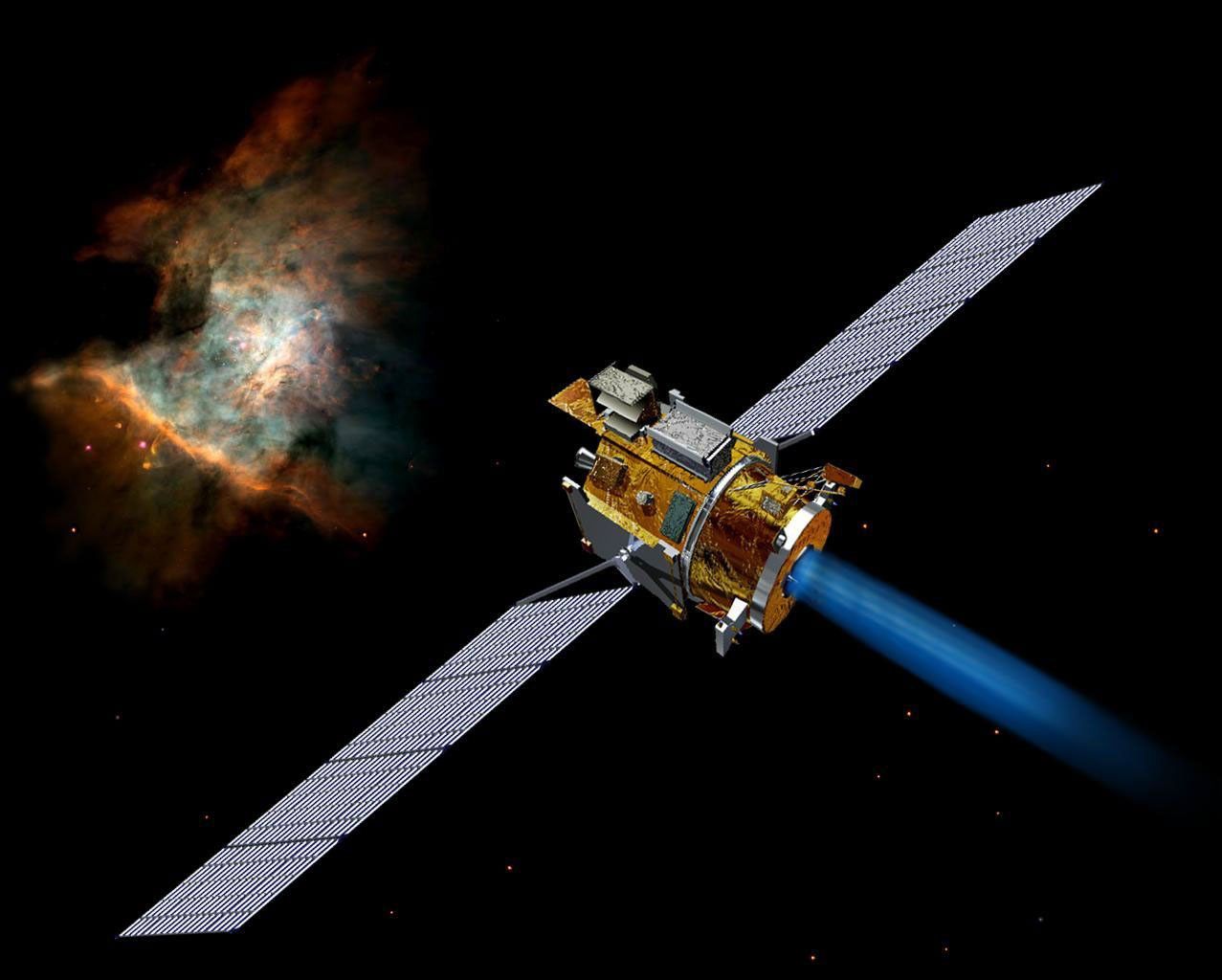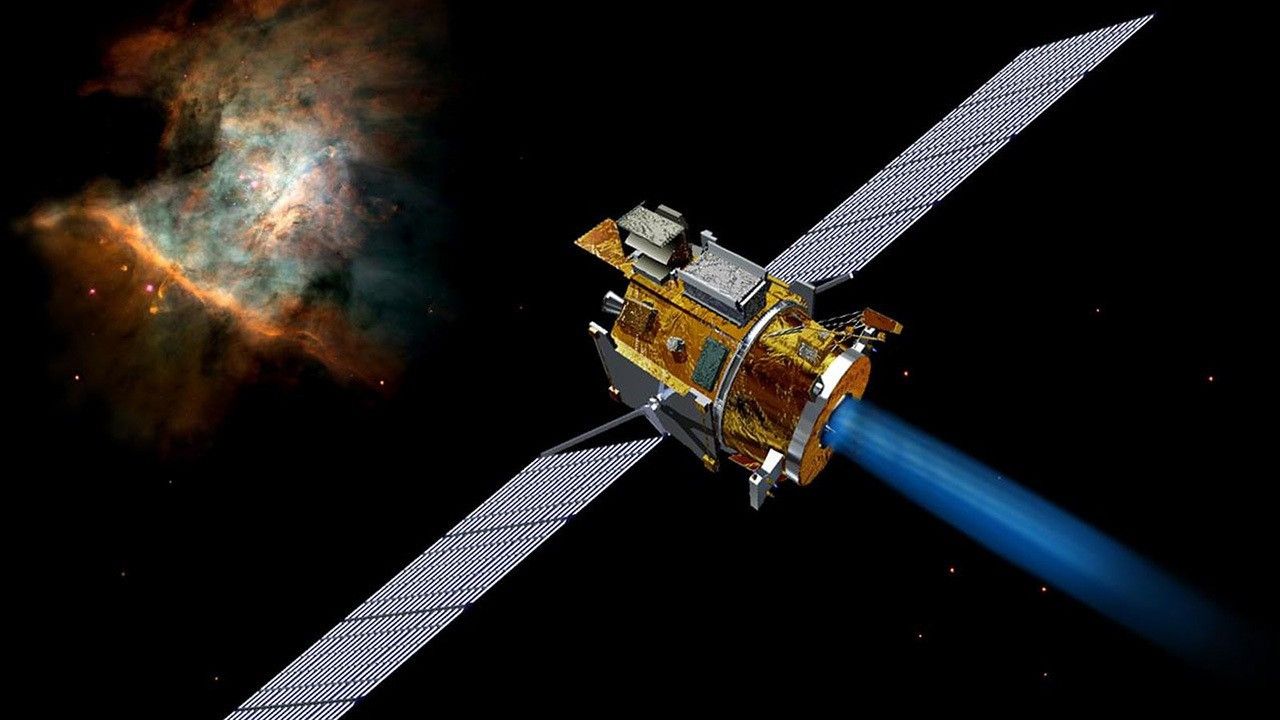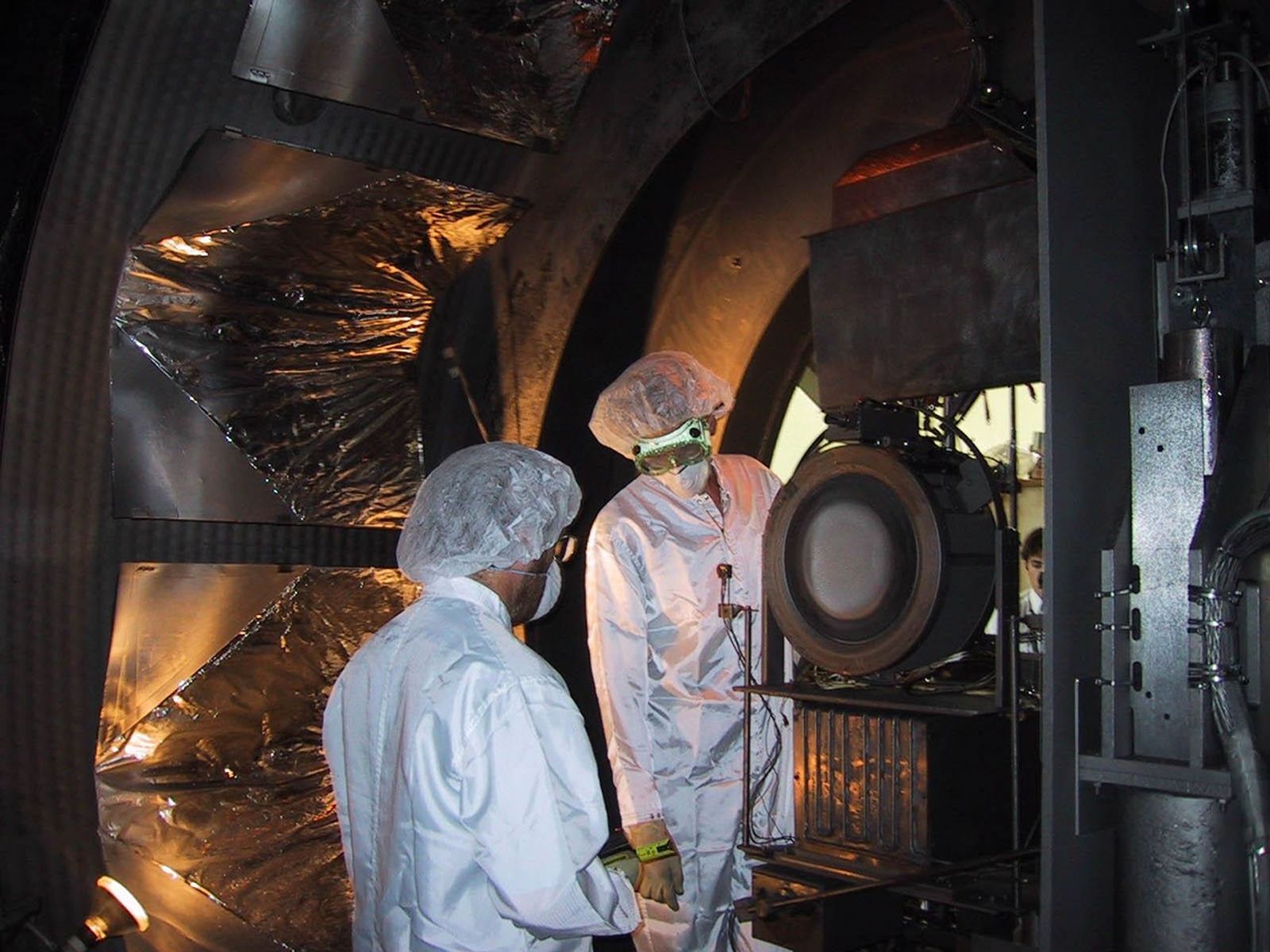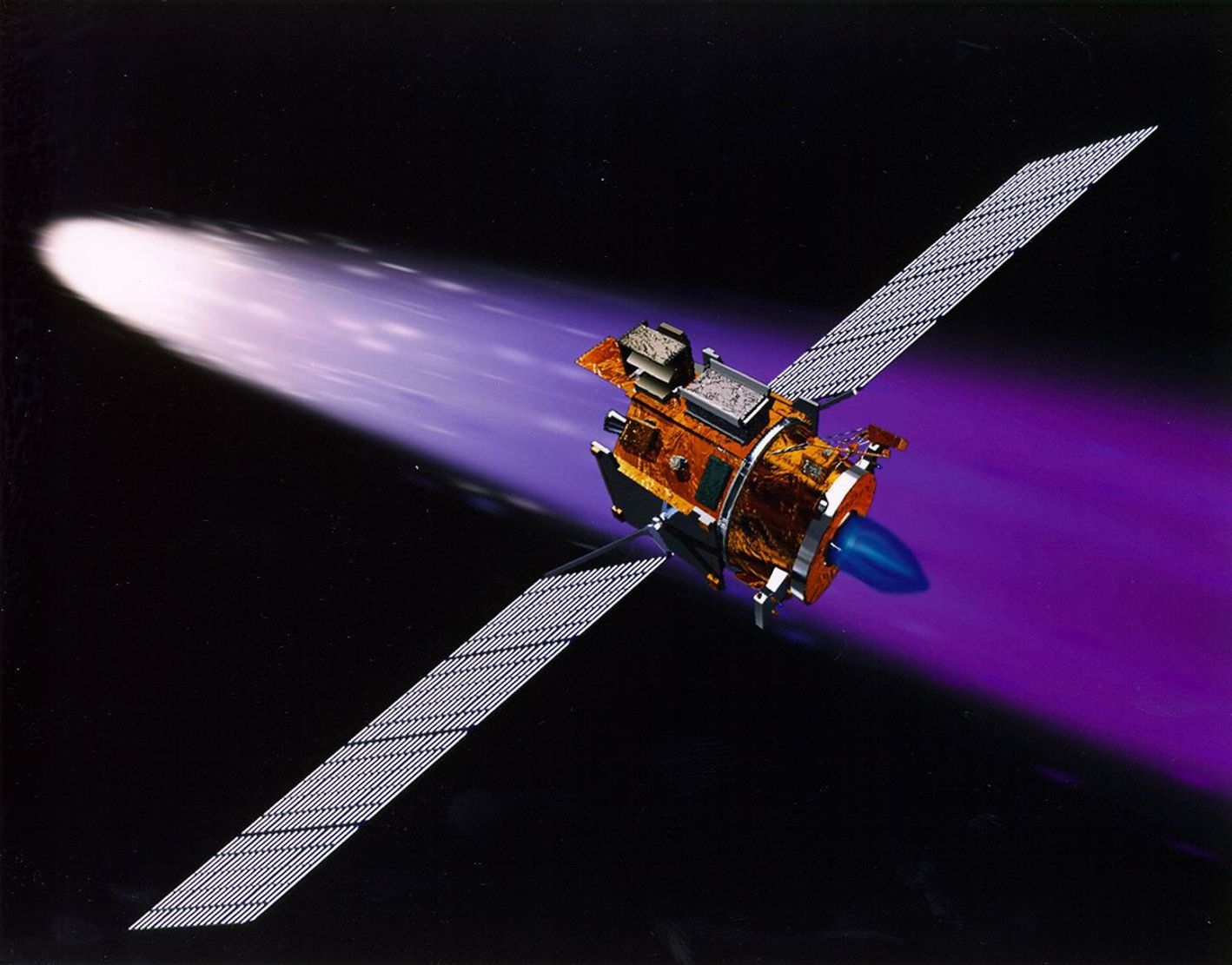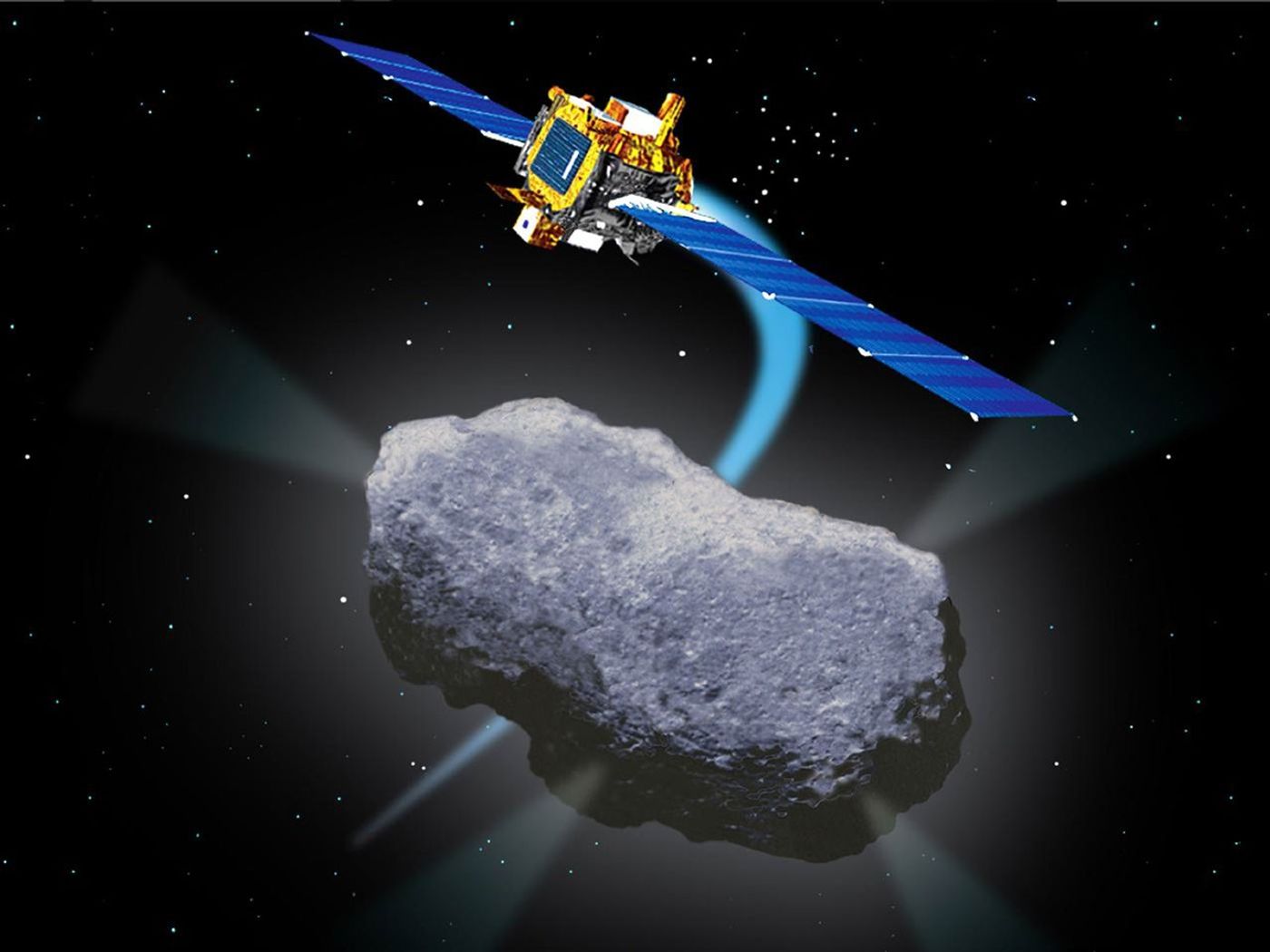Deep Space 1
Type
Launch
Target
Objective
What was Deep Space 1?
NASA's Deep Space 1 was an engineering test flight for a dozen new technologies, including highly-efficient ion engines and autonomous navigation software. Asteroid 9969 Braille was a bonus science target. DS1's primary mission was a resounding success. All 12 technology tests were successful.
- The mission is credited with proving the effectiveness of ion engines for long-duration spaceflight and advancing the field of spacecraft navigation.
- DS1 contributed to asteroid science by finding intriguing similarities between asteroid Braille and asteroid Vesta. It also returned valuable science data during its bonus flyby of comet Borrelly during an extended mission.
| Nation | United States of America (USA) |
| Objective(s) | Technology Testing, Comet Flyby |
| Spacecraft | DS1 |
| Spacecraft Mass | 1,071 pounds (486 kilograms) |
| Mission Design and Management | NASA / JPL |
| Launch Vehicle | Delta 7326-9.5 (no. D261) |
| Launch Date and Time | Oct. 24, 1998 / 12:08:00 UT |
| Launch Site | Cape Canaveral, Fla. / Launch Complex 17A |
| Technology Instruments | 1. Ion Propulsion System 2. Solar Concentrator Array with Refractive Linear Element Technology (SCARLET) 3. Autonomous Navigation System (AutoNav) 4. Remote Intelligent Operations Software (Remote Agent RAX) 5. Beacon Monitor Operations Experiment 6. Small Deep-Space Transponder (SDST) 7. Miniature Integrated Camera Spectrometer (MICAS) 8. Plasma Experiment for Planetary Exploration Instrument (REPE) 9. Ka-Band Solid-State Power Amplifier |
Key Dates
Oct. 24, 1998: Launch
July 29, 1999: DS1 passed by asteroid 9660 Braille
Sept. 18, 1999: Primary mission ended
Sept. 22, 2001: DS1 entered the coma of Comet Borrelly
Dec. 18, 2001: DS1's ion engine is finally turned off
In Depth: Deep Space 1
Deep Space 1 (DS1) was designed to test new technologies for future deep space and interplanetary missions. It was the first in a new series of technology demonstration missions under NASA’s New Millennium program.
The spacecraft’s main goal was to test 12 high-risk technologies including ion propulsion, autonomous optical navigation, a solar power concentration array, and a combination miniature camera-imaging spectrometer.
As a bonus, the spacecraft also was to fly by asteroid 9969 Braille.
After a successful launch into a parking orbit around Earth, a third stage burn at 13:01 UT Oct. 24, 1998, put DS1 on a heliocentric trajectory. On Nov. 10 controllers commanded the ion thruster to fire for the first time but it operated for only 4.5 minutes before stopping.
Two weeks later, on Nov. 24, 1998, controllers once again fired Deep Space 1’s ion propulsion system (fueled by xenon gas) when the spacecraft was about 3 million miles (4.8 million kilometers) from Earth. This time, the engine ran continuously for 14 days and demonstrated a specific impulse of 3,100 seconds, as much as 10 times higher than possible with conventional chemical propellants.
The mission tested its payload extensively to ensure that future users of such technologies would not take on unnecessary risks.
DS1 passed the near-Earth asteroid 9660 Braille at 04:46 UT July 29, 1999, at a range of about 16 miles (26 kilometers) and at a velocity of about 10 miles per second (15.5 kilometers per second).
Although it was the closest asteroid flyby to date, it was only partially successful due to a problem that compromised data delivered to the onboard navigational system. These difficulties prevented a closer encounter, originally planned at a range of about 790 feet (240 meters). The few images returned from very long range were out of focus, although other data was useful. DS1 found Braille to be 1.4 miles (2.2 kilometers) at its longest and 0.62 miles (1 kilometer) at its shortest.
Once the successful primary mission was over by Sept. 18, 1999, NASA formulated an extended mission. Originally, the plan was to have DS1 fly by the dormant Comet 107P/Wilson-Harrington in January 2001 and the Comet 19P/Borrelly in September 2001, but the spacecraft’s star tracker failed Nov. 11, 1999. Without the use of the star tracker, the mission was initially was thought to be doomed since the spacecraft could not point its ion engine or sensors in the proper directions.
For more than two months, the operations team struggled to get the spacecraft to point its antenna toward Earth to allow it to download data on the star tracker’s failure (as well as other data collected by DS1). Over the subsequent five months, the team devised an innovative plan to revive the vehicle, by building a new attitude control system that could operate without the failed star tracker.
Although it was no longer possible to visit the bonus targets given its limited capability, DS1 was still healthy enough to be targeted to Borrelly with the hope of arriving in September 2001.
By the end of 1999, DS1’s ion engine had expended 48.5 pounds (22 kilograms) of xenon to impart a total change in velocity (delta-v) of 4,265 feet per second (1,300 meters per second).
On its way to Borrelly, it set the record for the longest operating time for a propulsion system in space. By Aug. 17, 2000, the engine had been operating for 162 days as part of an eight-month run.
On Sept. 22, 2001, DS1 entered the coma of Comet Borrelly, making its closest approach of about 1,350 miles (2,171 kilometers) to the nucleus at 22:29:33 UT. Traveling at about 10 miles per second (16.58 kilometers per second) relative to the nucleus at the time, it returned some of the best images of a comet to date, as well as other significant data.
The spacecraft’s ion engine was finally turned off Dec. 18, 2001, having operated for 16,265 hours and provided a total change in velocity (delta-v) of about 3 miles per second (4.3 kilometers per second), the largest delta-v achieved by a spacecraft with its own propulsion system.
By this point, the spacecraft had operated far beyond its planned lifetime and was running low on attitude control hydrazine. A radio receiver was left on in case future contact with the spacecraft was desired, although an attempt in March 2002 to contact the spacecraft was unsuccessful.
Key Source
Siddiqi, Asif A. Beyond Earth: A Chronicle of Deep Space Exploration, 1958-2016. NASA History Program Office, 2018.

























